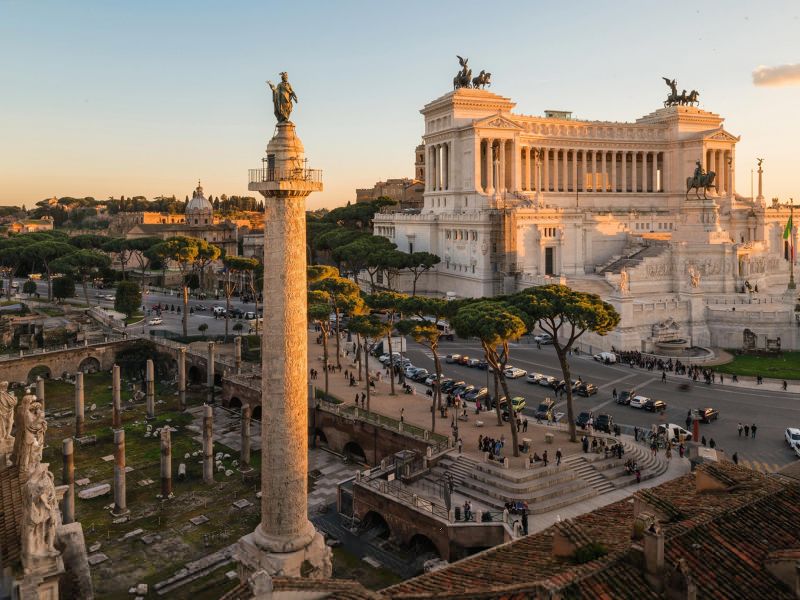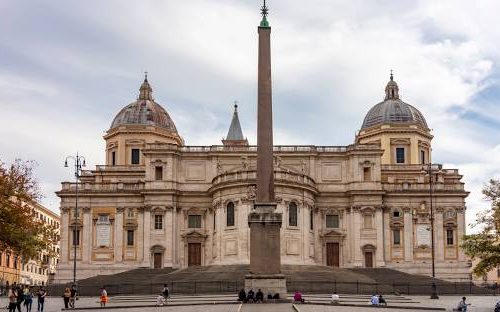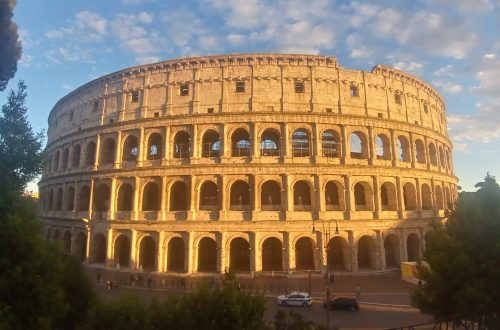
Column of Trajan
The Column of Trajan is a Roman triumphal column located in Rome, Italy. It was built by the Roman Emperor Trajan to commemorate his victory in the Dacian Wars (101–102 and 105–106 AD).
The column is renowned for its detailed and continuous bas-relief frieze that spirals around the column, depicting scenes from the Dacian Wars. The reliefs tell the story of the Roman military campaign, showcasing various aspects of Roman life, the army’s tactics, and the interactions with the Dacian people.
The Column of Trajan stands in Trajan’s Forum, a complex of buildings and open spaces constructed by Emperor Trajan. The monument is about 30 meters (98 feet) tall, and originally it might have been topped with a bronze statue of Trajan. The column is one of the best-preserved and most iconic examples of Roman monumental art, providing valuable insights into the military and cultural aspects of the Roman Empire during the 2nd century AD.
The Column of Trajan, completed in 113 AD, is a remarkable piece of Roman architecture and art. Here are some additional details:

Architectural Features:
- The column is made of Carrara marble and consists of 19 drums stacked on top of each other. Each drum is approximately 3.7 meters (12 feet) in diameter.
- The overall height of the column, including its pedestal and capital, is around 38 meters (125 feet).
- The column is hollow, and there is a spiral staircase inside that leads to a viewing platform at the top.
Bas-Relief Frieze:
- The most distinctive feature of the Column of Trajan is its continuous frieze, a narrative relief that spirals around the column 23 times, depicting over 2,500 figures.
- The frieze narrates the events of Trajan’s Dacian Wars, with scenes depicting battles, ceremonies, and everyday life. It serves as a historical record of the Roman military campaigns against the Dacians.
- The level of detail in the frieze is exceptional, providing a glimpse into Roman military tactics, equipment, and the diversity of people in the Roman Empire.
Pedestal and Statue:
- The column originally had a statue of Trajan at the top. This statue was later replaced by a statue of St. Peter in 1588 by Pope Sixtus V.
- The pedestal of the column is decorated with reliefs depicting scenes of sacrifice and religious ceremonies.
Trajan’s Forum:
- The Column of Trajan is located in Trajan’s Forum, a large complex of buildings and open spaces designed by the architect Apollodorus of Damascus.
- The forum includes the Basilica Ulpia, a large market hall, and other structures. The overall design reflects Trajan’s desire to create a monumental space to celebrate his victories.
Restorations and Preservation:
- Over the centuries, the column has undergone several restoration efforts to preserve its structural integrity and the clarity of its reliefs.
- Visitors can still climb the internal staircase to reach the top and enjoy panoramic views of Rome.
The Column of Trajan stands as a testament to Roman engineering, artistic prowess, and the desire of emperors to commemorate their achievements through monumental structures. It continues to be an important archaeological and historical site in Rome, attracting visitors from around the world.
![]()




